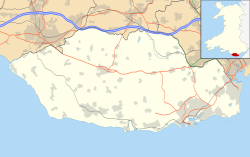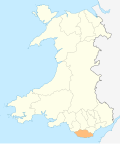This article needs additional citations for verification .(September 2024) |
Llandough
| |
|---|---|
 | |
Location within the Vale of Glamorgan | |
| OS grid reference | SS995729 |
| Community | |
| Principal area | |
| Preserved county | |
| Country | Wales |
| Sovereign state | United Kingdom |
| Post town | PENARTH |
| Postcode district | CF64 |
| Police | South Wales |
| Fire | South Wales |
| Ambulance | Welsh |
| UK Parliament | |
| Senedd Cymru – Welsh Parliament | |
Llandough (Welsh : Llandochau) is a village in the community of Llanfair, south of Cowbridge in the Vale of Glamorgan, Wales. [1]

